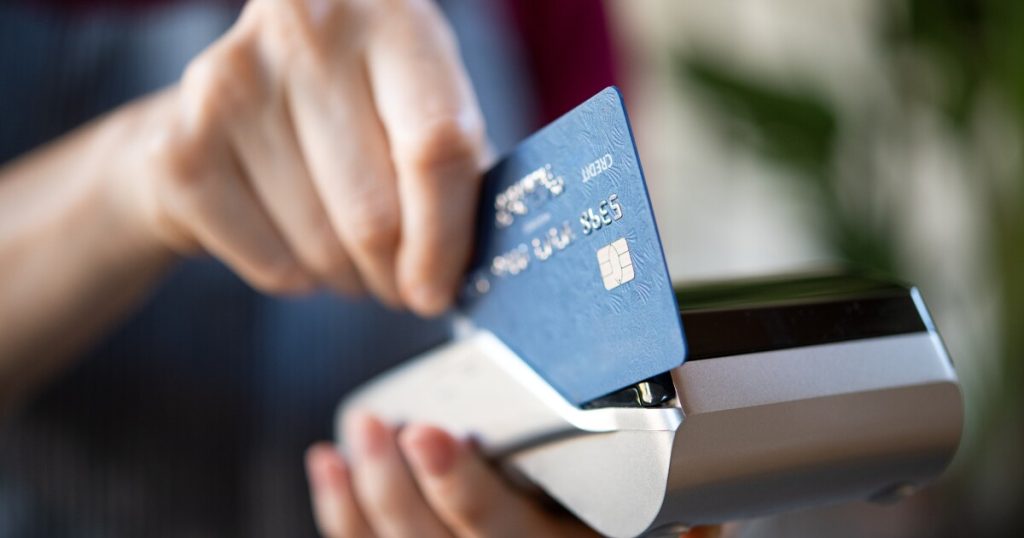EMV chip cards have grown exponentially and legacy magnetic stripe cards will soon be nearly gone.
That creates a need for banks to prepare for a world without magstripe cards.
Secure chips are used in more than 12 billion credit and debit cards today, accounting for 93% of in-store transactions globally, according to EMVCo, which facilitates the interoperability and acceptance of secure payment transactions.
The shift
Magstripes are a
Here’s what banks need to know about the transition:
What’s the timing for the transition?
Some cards in Europe have already dropped the magstripe, and U.S. banks will have that option starting in 2027. By 2029, no new Mastercard credit or debit cards will be issued with a magnetic stripe, according to the card network, and by 2033, Mastercard said magnetic stripes will be gone from circulation, except for prepaid cards in the U.S. and Canada.
“Hopefully, with this much time, you won’t have everyone rushing at the last minute to get this all done,” Laura Quevedo, executive vice president of financial crime and resiliency at Mastercard, told American Banker.
Planning ahead is important
Even though this shift isn’t immediate, the reissue cycle for cards is generally several years, Keri Crane, a director in the card processing solutions group at Jack Henry who chairs the U.S. Payments Forum’s Steering Committee, told American Banker. This means banks need to start thinking about the logistics now, including when existing cards expire, their inventory, designing new cards, reissuing cards, cardholder education and more.
“There’s a whole piece of customer communication that they have to plan for,” Quevedo said.
Banks may also need to make structural changes to accommodate the shift. For instance, if a bank’s ATMs require a magstripe to dispense money or to open the vestibule to get to the machine during off hours, changes will be necessary, Quevedo said.
It’s also an opportunity for small banks that aren’t already offering contactless cards to start doing so as they roll out new cards, Crane said.
For in-store purchases, 42% of American adults polled used debit cards with a chip and 35% used debit cards with swipe technology, according to last year’s data from YouGov, an international online research data and analytics technology group. Thirty-five percent used credit cards with a chip and 26% swiped with a credit card, the data showed. Contactless payments via debit or credit card and through mobile payment apps each accounted for 17% usage, YouGov data showed.
Will the other card networks follow suit?
So far, Mastercard has led the initiative to eliminate magstripes. The card network is concerned about the greater potential for fraud with magstripes and wanted to give constituents time to adjust to changes it feels are beneficial to the payment ecosystem. “Fraudsters continue to exploit the weakest link, and in many cases it’s magstripe,” Quevedo said.
For its part, Visa hasn’t said it plans to eliminate magstripes. “Visa is committed to a universal policy of open acceptance,” a spokesperson said. “The magnetic stripe currently enables transactions for people and businesses who may not yet have access to chip technology.”
American Express and Discover did not respond to requests for comment. Even so, some industry participants believe these other card networks will eventually follow suit, given the security concerns with magstripe.
Putting a date out there “helps us all move forward,” said John Drechny, chief executive of Merchant Advisory Group, which represents more than 150 U.S. merchants. Otherwise, it just lingers in the background forever, and you are “supporting a technology that really has very little use,” Drechny told American Banker.
Leave time for testing
Banks don’t want to make the switch to eliminate magstripes on cards too soon because of the potential for isolated incidents where a customer might have to swipe, such as a garage kiosk that doesn’t allow for card insertion, Drechny said. In that case, a customer might have to use a competitor’s card, which a bank wouldn’t want. “It’s a whole chicken and egg game,” he said.
Smart issuers will initially roll out cards in small batches in the hopes of identifying any issues and mitigating them before going into full production mode, he added.
Start thinking about what’s next for fraud patterns
If magstripes truly disappear, fraudsters will shift to other areas of payments, so the question is where to focus next once the shift is behind us, said Accenture’s Shniderman. Bad actors are likely to target the real-time rails and P2P even more so than they do today, he said.
“The cost of the technology to the fraudsters has gone down. The speed in which the banks can keep up has not accelerated at the same pace,” he said.

